How to Fix Windows Hello not Working on Windows?
Windows Hello provides an alternative way for users to log into their respective devices using iris scan, facial recognition, or fingerprint scan. It can also be used to sign into apps, online services, and networks. In some cases, Windows Hello simply stops working after an update, a Windows reset, or without an apparent reason at all.
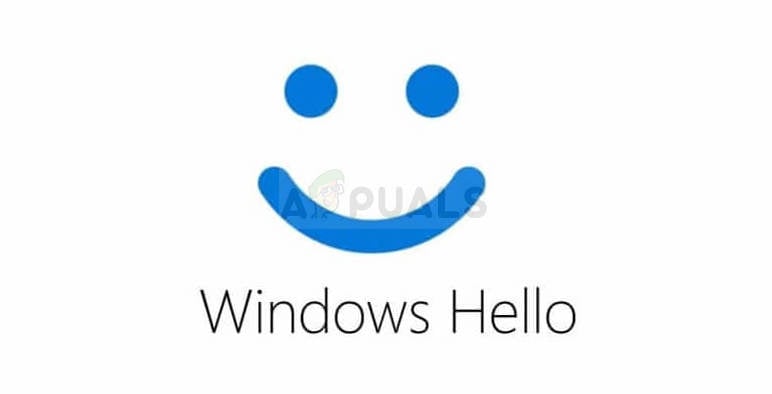
Either way, there are methods people have been using to resolve this problem and get Windows Hello to start working again. They are usually easy to perform so make sure you follow the solutions below in order to use the feature properly once again.
What Causes Windows Hello not to Work on Windows 10?
There are several causes which usually make Windows Hello stop working on Windows 10. These causes are usually tied with recently installed Windows updates, Windows resets, or similar. Check out the list below:
- Trusted Platform Module (TPM) is not set up on your device – TPM needs to be set up and running on the device in order for it to allow PIN login for domain users. Users have resolved the problem by setting it up on their computers
- PIN login is not authorized – Similar to the first cause, a recent Windows update may have disabled PIN login authorization you had before. Make sure you enable it again in Registry Editor.
- Old drivers for imaging and biometric devices – If the drivers for the required devices such as webcams, fingerprint sensors, and iris scanners are old and outdated, Windows Hello won’t be able to start. Updating them in Device Manager managed to resolve the problem for many users.
Solution 1: Set up TPM on your Device
Trusted Platform Module (TPM) technology provides hardware-based, security-related functions and it needs to be set up before trying to access Windows Hello on your device. It may have been turned off as a result of other actions you may have undertaken on your computer or by a result of an update or a Windows reset. Follow the steps below in order to get it started again.
- Open the Run utility by using the Windows Key + R key combination on your keyboard (press these keys at the same time. Type “tpm.msc” in the newly opened box without the quotation marks and click OK in order to open the Trusted Platform Module (TPM) Management tool.
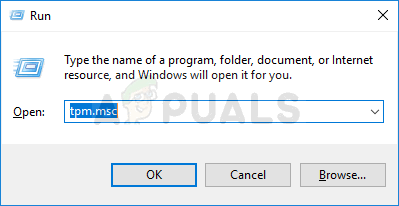
- From the menu at the top of the window, click on Action and choose the Prepare the TPM… option from the context menu which will appear.
- A window will appear prompting you to restart your computer and follow the instructions which will appear during the startup process.
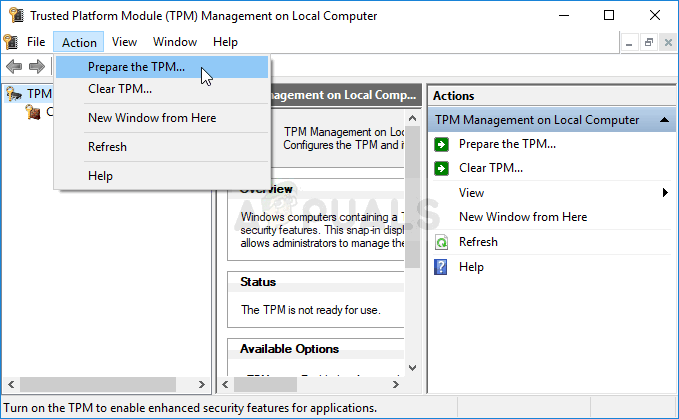
- Click the Restart button and follow the instructions at startup. Check to see if Windows Hello now works on your device.
Solution 2: Authorize the PIN Login using the Registry Editor
After the Anniversary update for Windows 10, many users have experienced difficulties using Windows Hello because the procedure behind PIN login for a domain user was reset. This means that PIN logon needs to be re-enabled on Windows 10 before being able to use Windows Hello. Follow the steps below in order to do so!
- Since you are going to edit a registry key, we recommend you check out this article we have published for you to safely backup your registry to prevent other problems. Still, nothing wrong will occur if you follow the steps carefully and correctly.
- Open the Registry Editor window by typing “regedit” in the search bar, the Start menu, or the Run dialog box which can be accessed with the Windows Key + R key combination. Navigate to the following key in your registry by navigating at the left pane:
HKEY_LOCAL_MACHINE\SOFTWARE\Policies\Microsoft\Windows\System
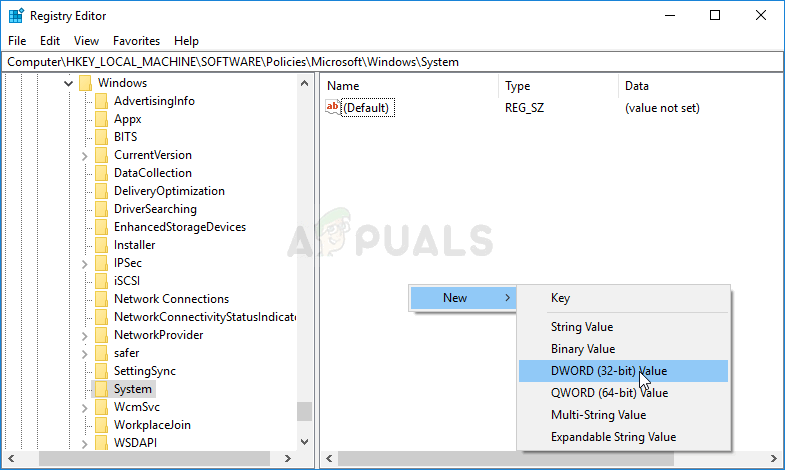
- Click on this key and try to locate an entry named AllowDomainPINLogon. If it’s not there, create a new DWORD Value entry called AllowDomainPINLogon by right-clicking at the right side of the window and choosing New >> DWORD (32-bit) Value. Right-click on it, and choose the Modify option from the context menu.
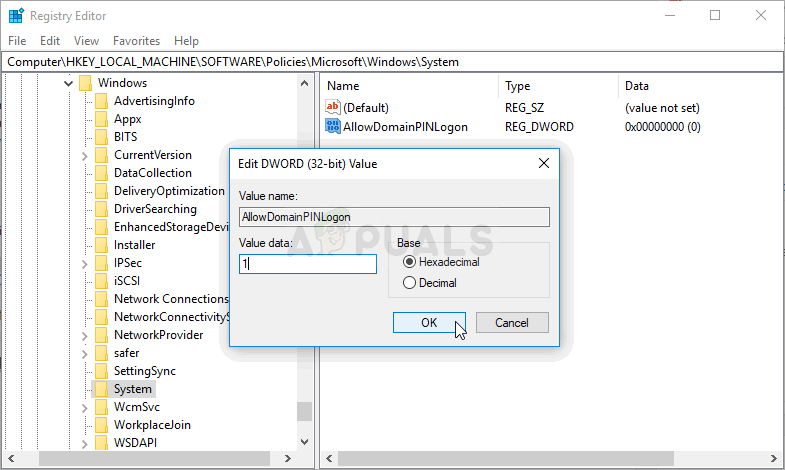
- In the Edit window, under the Value data section change the value to 1 and apply the changes you have made. Make sure the Base is set to Hexadecimal. Confirm any security dialogs which may appear during this process.
- You can now manually restart your computer by clicking Start menu > Power button > Restart and check to see if the problem is gone. This will probably resolve the problem immediately.
Solution 3: Reinstall Drivers for Biometric and Imaging Devices
Users were able to resolve the problem after reinstalling drivers for imaging devices and for devices which are used as biometric devices such as fingerprint sensors and iris scanners. If the device used to process the biometric or image input malfunctions, Windows Hello is ought not to work and this problem must appear. Make sure you update all of the required drivers before checking to see if the problem persists.
- Click the Start menu button, type in “Device Manager”, and select it from the list of available results by simply clicking the first one. You can also tap the Windows Key + R key combo in order to bring up the Run dialog box. Type in “devmgmt.msc” in the dialog box and click OK in order to run it.
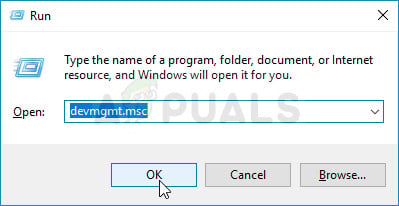
- The sections you need to visit are named Imaging devices and Biometric Devices. From the Imaging devices section, make sure you undertake these steps for your webcam. Inside Biometric devices, you can choose all entries. Perform the following steps for all devices. Right-click on each selected entry and choose the Uninstall Device.
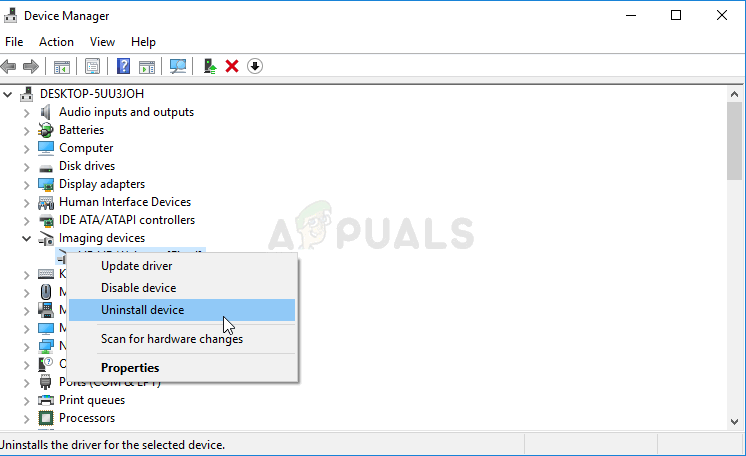
- Confirm any dialogues or prompts which may ask you to confirm the uninstallation of the current driver and wait for the process to complete.
- Google ‘your device’s name + manufacturer’ and look for a link to their official website. Find your device’s latest driver and download.
- Make sure you run the file you have just downloaded and follow the instructions which will appear on-screen in order to install the latest drivers. Alternatively, you can go back to Device Manager and click Action from the top menu. Click the Scan for hardware changes option and it will check for devices without drivers and reinstall them automatically.
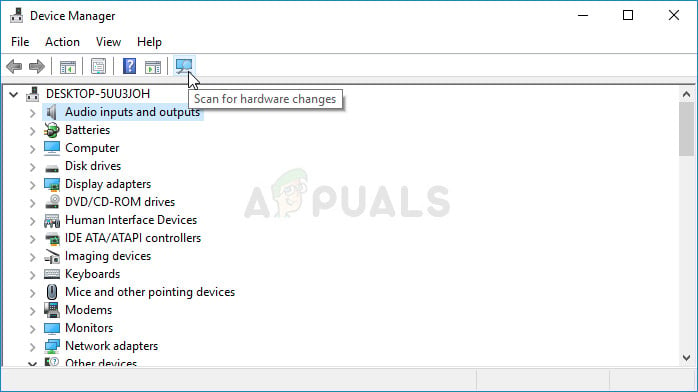
- Check to see if the problem has been resolved and if Windows Hello problems still occur!
Solution 4: Update Windows to the Latest Version
Users have reported that the latest available version of Windows 10 managed to resolve the problem for them so make sure you download and install it. Updating your operating system to the latest version is always helpful when it comes to dealing with similar errors and users have reported that the latest Windows 10 versions actually deal with this problem in specific.
- Use the Windows Key + I key combination in order to open Settings on your Windows PC. Alternatively, you can search for “Settings” by using the search bar located at the taskbar or clear the cog icon in the lower left part.
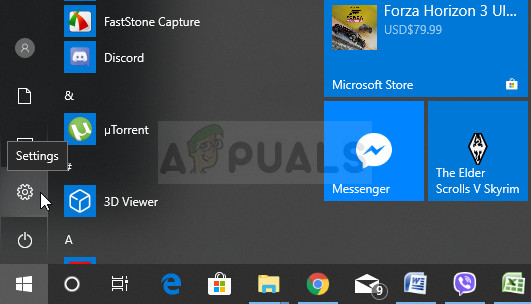
- Locate and open the “Update & security” section in the Settings Stay in the Windows Update tab and click on the Check for updates button under the Update status in order to check whether there is a new version of Windows available.
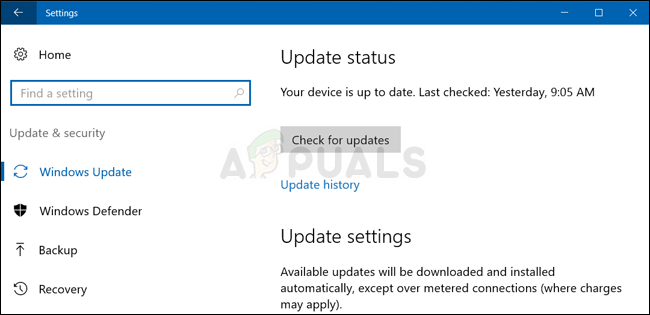
- If there is one, Windows should install the update immediately and you will be prompted to restart your computer afterward.
Solution 5: Verify Your Micorosft Account
You may fail to change your Windows Hello options if your Microsoft account is not verified. In this case, verifying your account in the system’s settings may solve the problem.
- Hit the Windows key and open Settings.
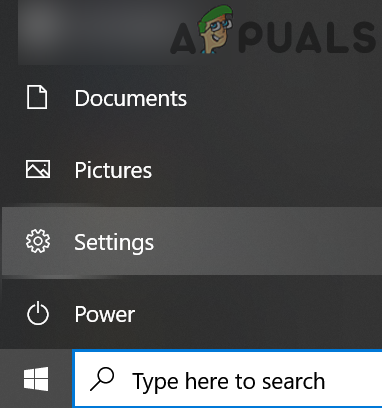
Open Settings of Your System - Now open Accounts and then steer to Your Info tab.
- Then check if you need to verify your account. If so, then click on Verify and follow the prompts on your screen to verify your account.

Verify Your Microsoft Identity on the PC - Now reboot your PC and check if Windows Hello is working fine.
Solution 6: Use the Group Policy Editor
You may fail to use Windows Hello if your system’s group policy bars you from using it or if your system is part of a domain network. In this case, editing the relevant group policy settings may solve the problem.
- Hit the Windows key and type Group Policy Editor. Then select Group Policy Editor.
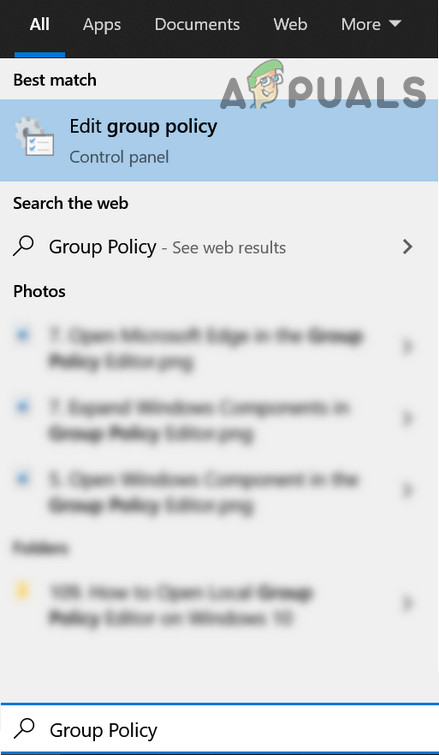
Open Group Policy Editor - Now, in the left pane, navigate to the following:
Computer Configuration\Administrative Templates\System\Logon
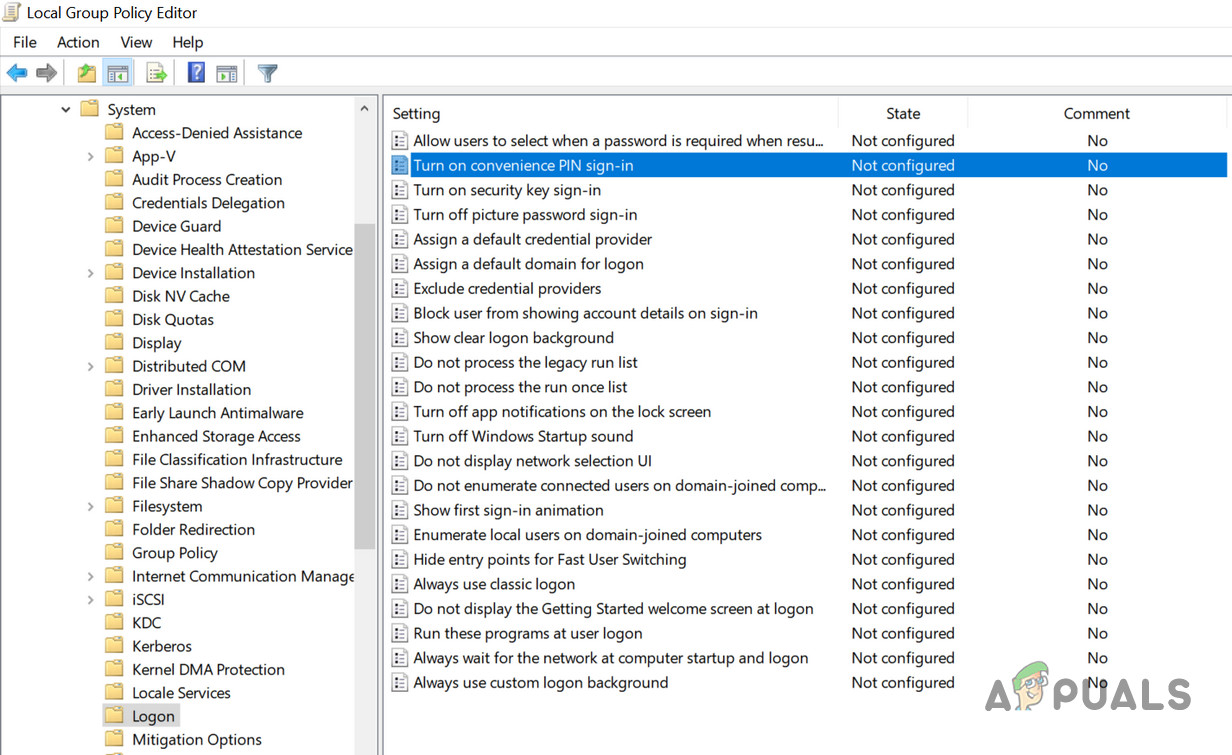
Open Turn on Convenience Pin Sign-In Policy in the Group Policy Editor - Then, in the right pane, double-click on Turn on Convenience Pin Sign-In Policy and select Enabled.
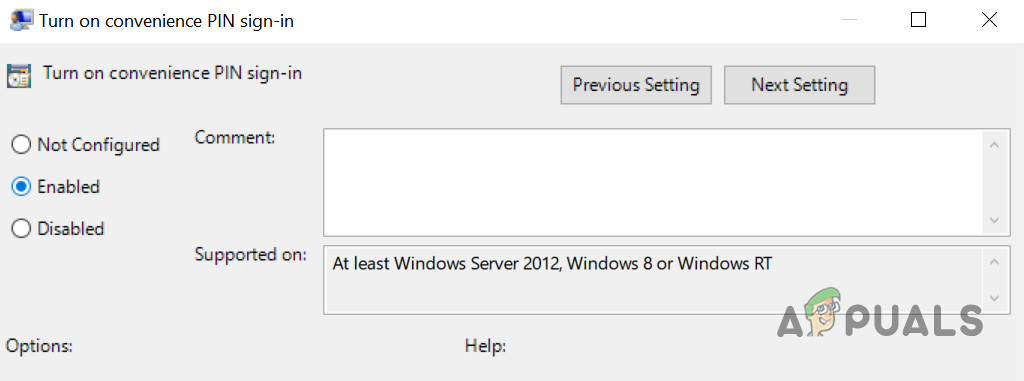
Enable the Turn on Convenience Pin Sign-In Policy - Now click on Apply/OK and then, in the left pane of the Group Policy Editor, navigate to the following:
Computer Configuration\Administrative Templates\Windows Components\Windows Hello for Business\
- Then, in the right pane, make sure every policy is set to Not Configured.
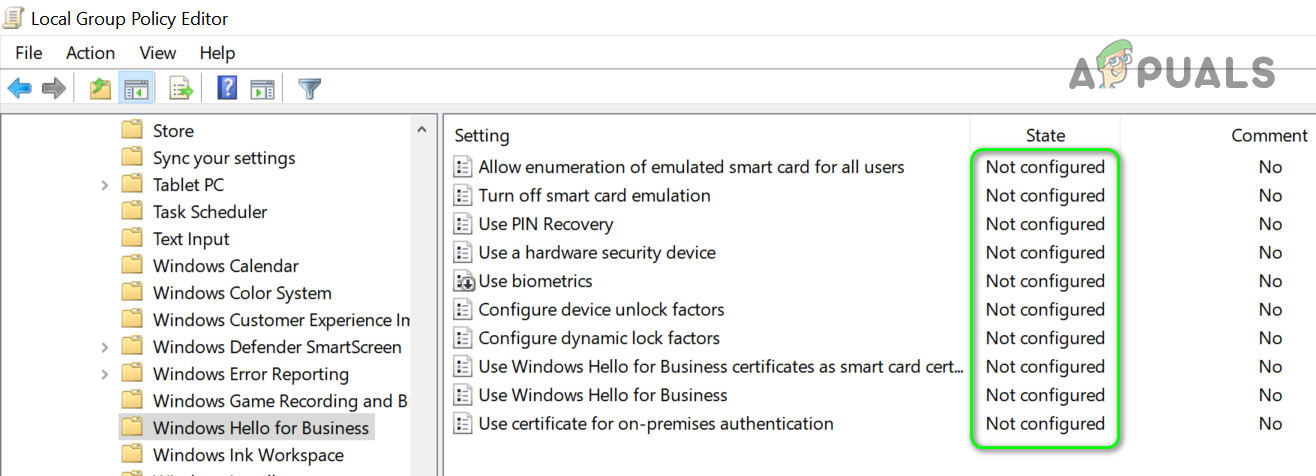
Set Windows Hello For Business Policies to Not Configured - Now reboot your PC after exiting the Group Policy Editor and check if the Windows Hello is working fine.
Source:
Solution 7: Disconnect from Your Work/School Account
Windows Hello may fail to operate or its options (PIN, fingerprints, etc.) may not be available if your system is part of a work or school network. You may have unintentionally joined the school or work account when you signed in to the Office 365 mail or Word application using school/network credentials (especially if the let my organization manage this device option was enabled). In this case, disconnecting your PC from the work/school account may solve the problem.
- Press the Windows key and choose Settings.
- Then open Accounts and in the left pane, select Access Work or School.
- Now Disconnect from the work/school account (no need to touch “Connected to whatever domain”.
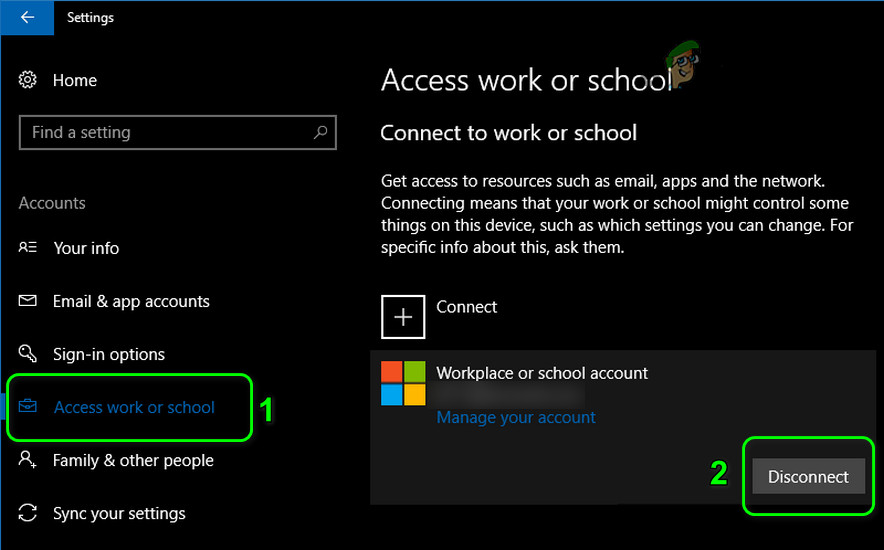
Disconnect From Your Work or School Account - Then reboot your PC and check if the Windows Hello issue is resolved.
- If not, check if adding and then removing a work/school account solves the issue.
If the issue is still there, then you can try resetting the PIN to sort out the issue.
- Hit the Windows key and type Sign-in Options.
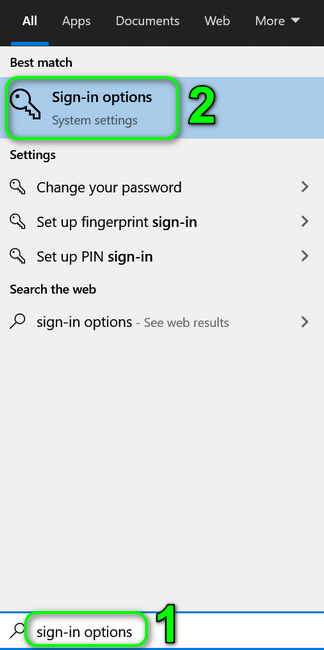
Open Sign-in Options - Now expand Windows Hello PIN and click on I Forgot My PIN.
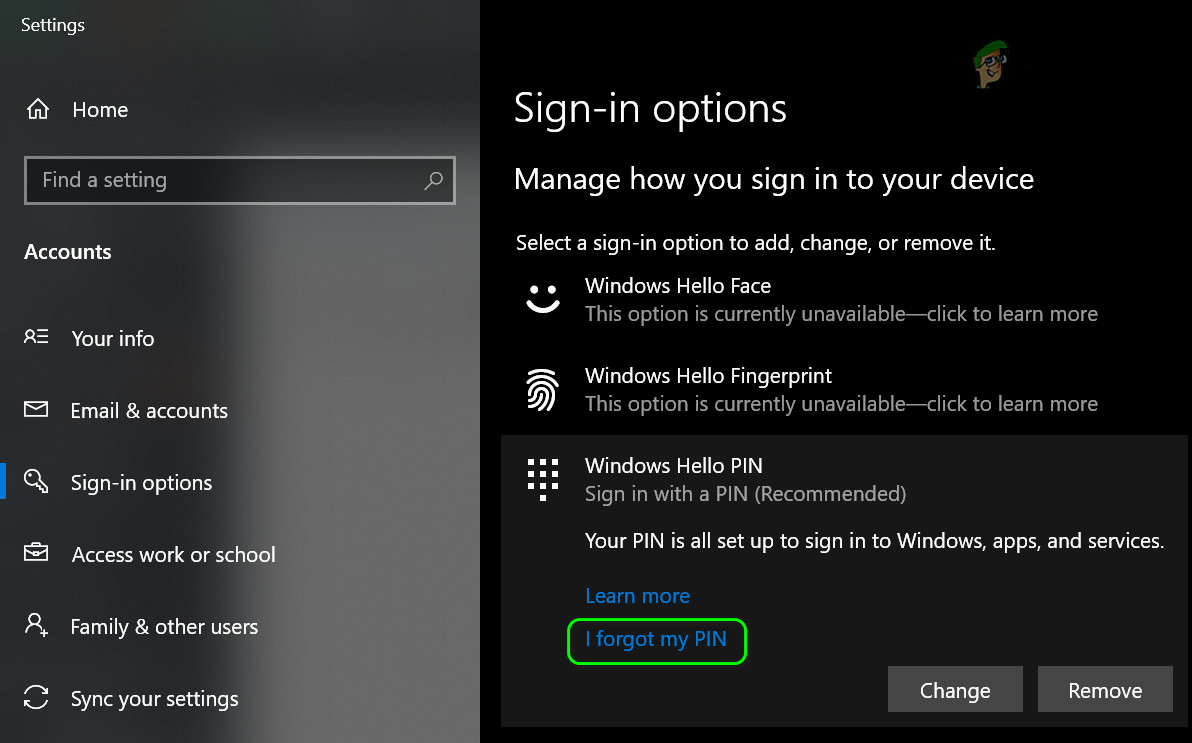
Click on I Forgot My PIN for Windows Hello PIN - Then follow the prompts to reset the PIN and check if the Windows Hello is working fine.
Solution 8: Use the Local Account
You may encounter the error at hand if your Microsoft account is not properly set up on the problematic device or its profile on the system is corrupt. In this context, switching to a local account and then reverting to the Microsoft account may solve the problem.
- Hit the Windows key and open Settings.
- Then open Accounts and in the Your Info tab, click on the option of Sign in With a Local Account Instead.
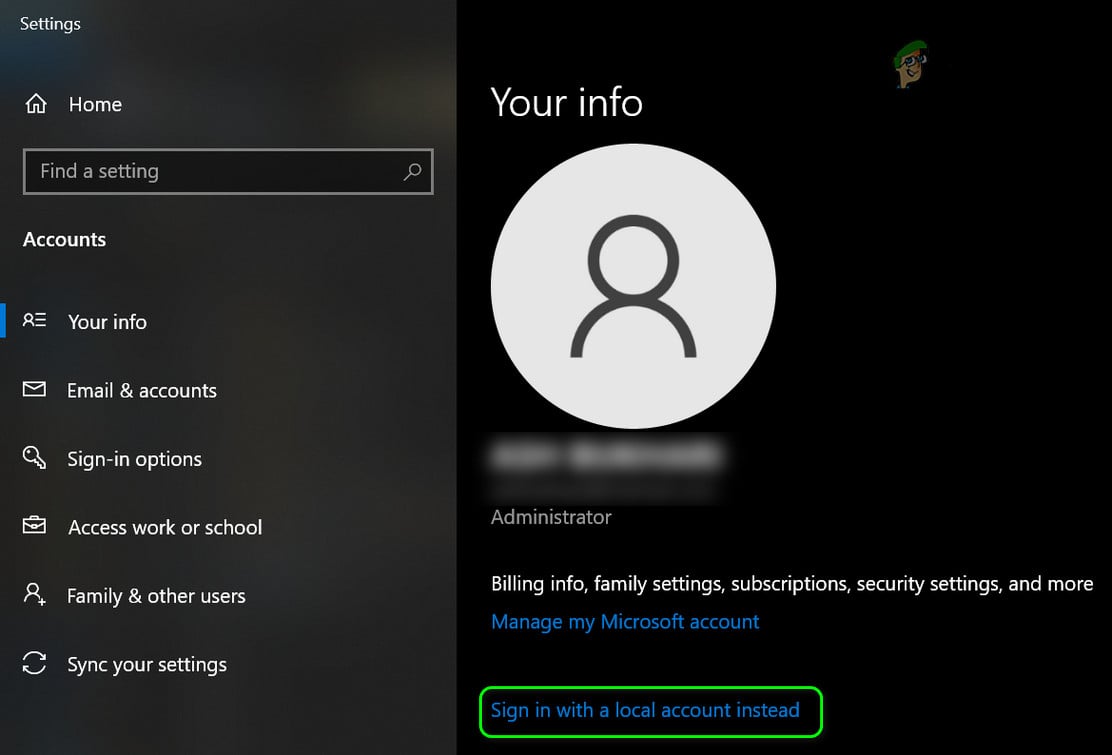
Sign In With a Local Account Instead - Then follow the prompts and log in using the local account
- Now repeat the same steps but click on Sign In With a Microsoft Account and hopefully, the Windows Hello issue is would be resolved.
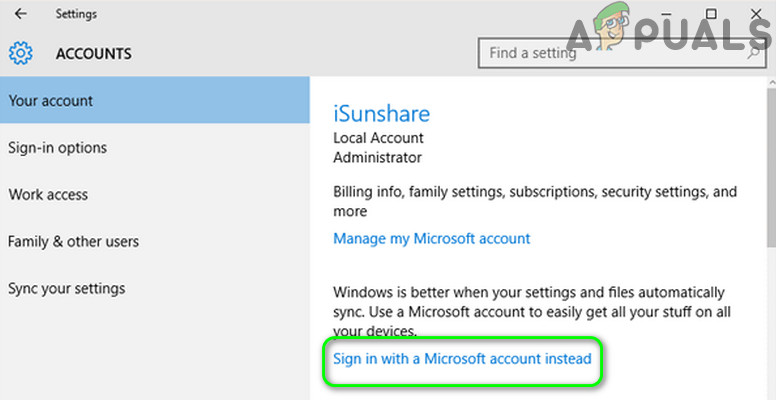
Sign-In With a Microsoft Account Instead
If the issue is still there, then you may try to reset your PC to factory defaults.




